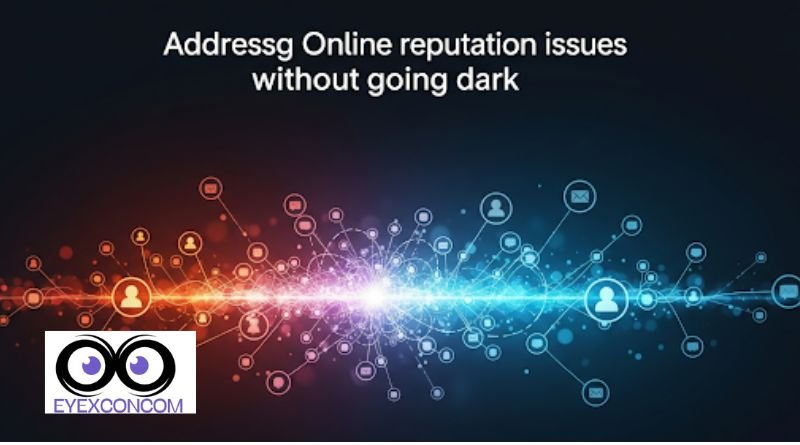Online reputation isn’t just about appearances—it’s about trust, credibility, and control. Whether you’re an individual or a business, what shows up about you online can shape opportunities, client relationships, and long-term success. And when negative content surfaces, the instinct to retreat or disappear entirely is common—but often counterproductive.
Why Online Reputation Issues Matter
A single review, article, or social media comment can carry outsize weight, especially when it’s the first thing someone sees in search results. And thanks to how quickly content spreads online, small issues can escalate rapidly.
That’s why it’s crucial to understand what damages reputations and how to respond before the situation escalates.
Common Reputation Challenges
Reputation issues can come from multiple sources, including:
- Negative reviews on Google, Yelp, or Trustpilot
- Outdated or misleading information on third-party sites
- Damaging news coverage or blog posts
- Social media backlash or viral comments
- Competitor attacks or coordinated smear campaigns
These problems can impact more than visibility—they influence trust, credibility, and conversion rates. For individuals, they can jeopardize job opportunities or partnerships. For brands, they can mean lost customers, deals, and revenue.
The Ripple Effect: Business and Personal Branding
A poor online reputation does more than sting—it changes how people see you.
For businesses:
- Negative content lowers click-through rates, customer trust, and sales.
- It weakens brand positioning and kills referral momentum.
For individuals:
- Search results affect hiring decisions, investor confidence, and credibility.
- Online perception can override real-world qualifications or achievements.
That’s why reputation management is no longer optional. It’s foundational.
Smart Strategies to Address Reputation Problems
You don’t need to overcorrect or disappear from the internet. You just need the right balance of proactive protection and targeted response.
Proactive Measures to Stay Ahead
The most significant reputation issues are those that never occur. Here’s how to prevent most damage:
- Respond early and often. Silence is interpreted as guilt or indifference. A timely and respectful response to reviews or feedback demonstrates accountability.
- Use monitoring tools. Platforms like Google Alerts, Brand24, and Mention help you track mentions and sentiment in real time.
- Invest in customer experience. Happy customers leave good reviews. Build feedback loops, offer support, and make follow-up a standard part of your process.
- Encourage positive content. Ask satisfied clients for testimonials. Promote case studies. Highlight team wins and milestones.
Being visible for the right reasons helps dilute or outrank negative ones.
Reactive Steps for Damage Control
When something negative does appear, speed and strategy matter.
- Identify the issue. Is it a factual error? A bad review? A damaging article?
- Assess visibility. Does it rank on the first page of Google? Is it spreading on social?
- Craft a response. For reviews, respond publicly and empathetically. For misinformation, contact the site owner or publisher directly.
- Suppress and outweigh. Create optimized, high-authority content to push the negative content down in search results.
Utilize tools like sentiment analysis to prioritize areas that require attention and identify recurring patterns that warrant internal improvement.
Tools That Make Reputation Management Easier
You don’t have to tackle everything manually. Reputation management platforms and social listening tools can give you the edge.
Online Reputation Management (ORM) Platforms
ORM tools like NetReputation, InternetReputation.com, and OnlineReputation.com help:
- Monitor search results and review sites
- Track reputation metrics across platforms
- Automate alerts for new content or reviews
- Manage and respond from a centralized dashboard
They’re especially valuable for brands juggling multiple locations or channels.
Social Listening Tools
Social platforms move fast, and backlash moves faster.
Tools like Hootsuite, Sprout Social, and Brandwatch let you:
- Track brand mentions across platforms
- Monitor trending keywords or sentiment shifts
- Engage with users in real-time
- Spot issues before they escalate
These insights also help shape your content strategy and brand voice.
Building a Stronger, More Visible Online Presence
Once the fire is out, the real work begins—creating a presence that’s resilient, credible, and hard to knock down.
Strengthen Your Personal or Business Brand
- Align your message. Make sure your brand identity, content, and tone are consistent across all channels.
- Be active. Don’t just show up when something goes wrong. Share insights, celebrate wins, and spotlight your team or clients.
- Prioritize authenticity. People trust brands and individuals who are transparent, accountable, and human, not perfect.
Leverage Positive Feedback
- Ask for reviews. Timing is key—ask after a win, a sale, or a great customer interaction.
- Make it easy. Offer links to review sites and keep the ask simple.
- Showcase the good stuff. Highlight testimonials on your website, in proposals, or on social media. Let others tell your story.
When done right, testimonials act as social proof and build trust that money can’t buy.
Final Word: Reputation Is a Living Thing
You don’t need to disappear when something goes wrong online. In fact, doing so often makes things worse.
Address issues head-on. Use the right tools. And more importantly, keep showing up.
Because in today’s online world, your reputation isn’t just a reflection—it’s an asset. Treat it like one.

